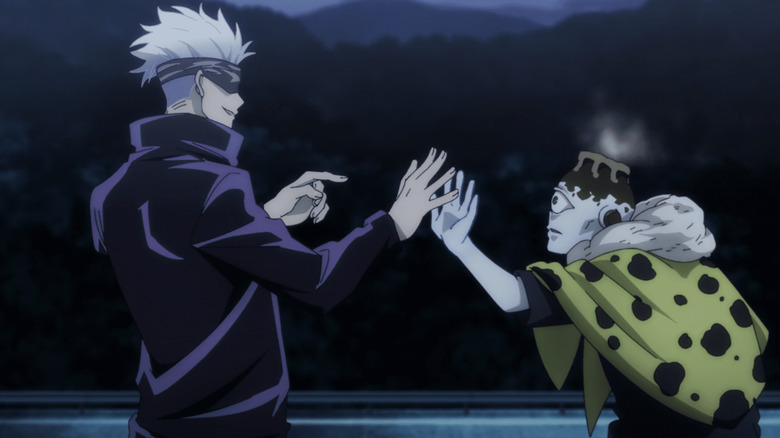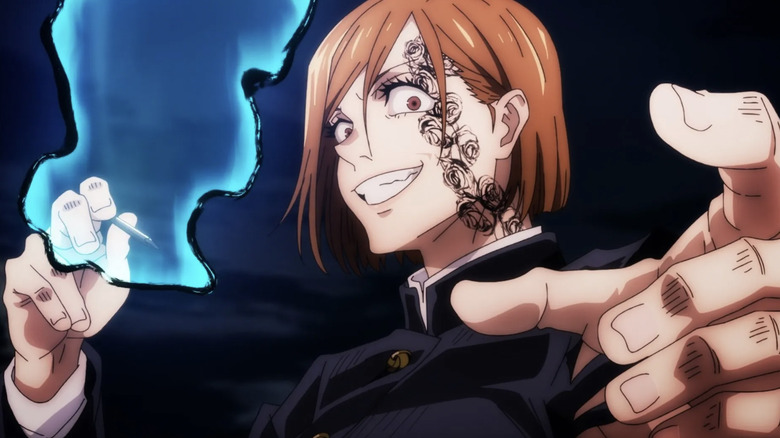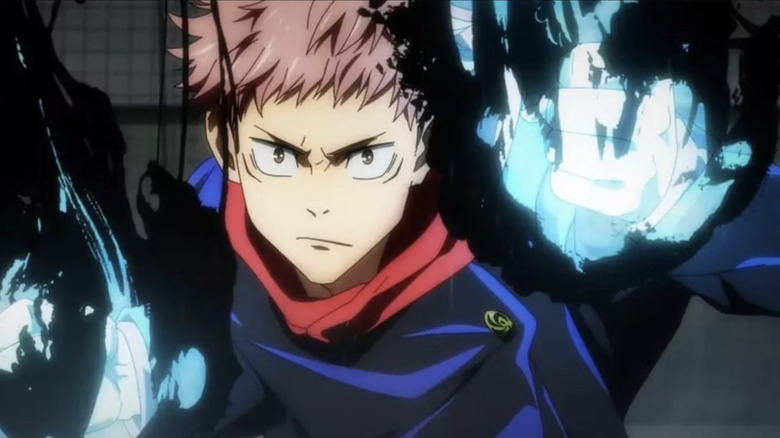Adapting Jujutsu Kaisen's Fight Scenes To Anime Was The Easy Part
"Jujutsu Kaisen 0" is finally available to stream on Crunchyroll after a successful theatrical release. The prequel film tells the story of Yuta Okkotsu, a special-grade sorcerer, before the events of the anime's first season. With a highly anticipated second season on the way, "Jujutsu Kaisen" is more popular than ever.
A large part of the success of "Jujutsu Kaisen" is Studio MAPPA, the animation studio behind the anime adaptation. Without the hard work of the animation team bringing Akutami's vivid fights to life from page to screen, there would be no Jujutsu Kaisen anime, let alone one as stylish and visceral as we got.
According to the animation team behind the film and the series, animating the fight scenes is easy; the more high-concept ideas and original material not in the manga are the hard parts. With how much a manga like "Jujutsu Kaisen" uses exposition to explain concepts like cursed techniques, it's no surprise that Studio MAPPA finds those aspects especially challenging.
Action-heavy anime
In an interview with Crunchyroll, MAPPA president Manabu Otsuka and "Jujutsu Kaisen" screenwriter Hiroshi Seko spoke about the intricacies of an anime adaptation. When it came to bringing the intense fight scenes of the manga to life, Otsuka described it as a worldwide collaborative effort that all of Studio MAPPA was eager to work on:
"I always tended to create great action scenes, and it was definitely a focus for us. In the case of 'Jujutsu Kaisen,' we had a number of animators who were eager to draw those great fight sequences. Not just Japanese animators but animators from all over the world. That's probably the reason why 'Jujutsu Kasien' is known to be an anime with great action that fans love."
Studio MAPPA is known as a studio that produces action-heavy anime. One of their other more famous works is the final season of "Attack on Titan," which features action as creative and entertaining as their work on "Jujutsu Kaisen." The world-building and exposition that helps the fights make sense is where things get tricky for the animation studio.
Bringing exposition from page to screen
When screenwriter Hiroshi Seko was asked in the same interview about what difficulties came with adapting "Jujutsu Kaisen," he spoke in detail about bringing exposition from the manga to life through monologues:
"There were some scenes that did not exist in the original manga, so of course, those scenes were difficult to create from scratch. Then there were a lot of scenes that we entirely composed of narration, dialogue, and description that Akutami-sensei would tell us not to use, but of course, we can't eliminate them all, so we had to figure out how to incorporate some of the info that was described in narration into animation – usually as a monologue."
Gege Akutami, the creator of "Jujutsu Kaisen," believed that his exposition was something better left as text on a page of the manga. However, Seko's desire to bring the explanations and concepts to life on the screen no doubt made the anime adaptation of "Jujutsu Kaisen" more compelling than it already is. While Akutami would disagree with using narration and exposition, one could argue that "Jujutsu Kaisen" and its implementation of lore elevates the fights in the series and the anime as a whole.


